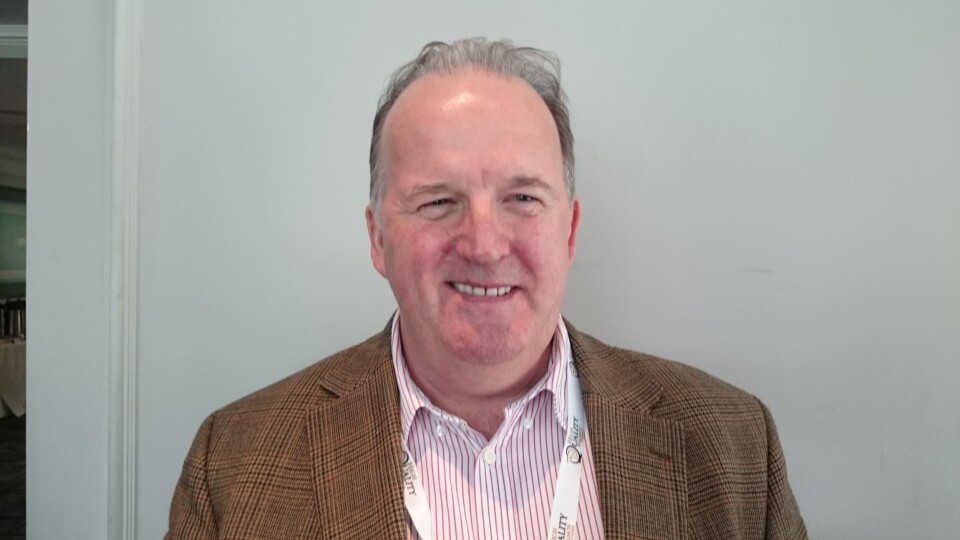
SSPO calls for faster green light for fish farms
David Sandison, Shetland general manager of the Scottish Salmon Producers’ Organisation, has called on authorities to speed up permission for new farms following news that salmon has regained the crown of the UK’s top food export.
He said: “We have now again established ourselves as the No.1 food export from the UK, not just Scotland. It is not unexpected. We predicted that our export levels would rise again this year because our production is rising and I think we are going to see this continue throughout the year.
“I am fairly confident that in the second half of the year we will see pretty similar statistic as well.
“We knew we [previously] had a flatline in terms of growth in the industry, for a number of reasons. Some of it was about our actual ability to find more spaces to grow, some of it was just about companies’ plans, some of it was about performance, about not getting the growth in the fish and some early harvesting. But what we’ve got now is some fairly clear indications we’ve had solid growth in the first three or four months of the year - we can see that in the returns we get from our member companies - and we’ve got predictions that that will lead to an in-year increase of maybe 10-20,000 tons of additional capacity in Scotland coming through."
Significant jump
“We are talking about growth of around about up to 10 per cent in total perhaps in-year, which is a pretty significant jump from last year.”
Sandison, speaking to fishfarmingexpert.com at the inaugural High Quality Salmon Congress hosted by MSD Animal Health in Aberdeen, added that the extra value of the additional tonnage was difficult to predict: “Value is at a high because of the price we are achieving in the market place. That is helped by the position of the UK, vis a vis the exchange rates with the key markets that we work in, primarily the US and the EU.
“It’s difficult to predict prices. It might tighten up a bit in the latter part of the year but it is pretty solid at the moment, so I couldn’t really say much more specifically about price.”
Speaking about demand outstripping supply, he said: “Frankly we could sell more, and the aspiration is to grow and to grow sustainably, so if we can do that and hit our export targets as well that’s a great place to be.
Painstaking process
“The aim of most companies it to try and get some new territory, so they are looking at opportunities for new sites in good places, but a lot of it is about getting more out of existing farms, getting better levels of output from existing sites, adding a little bit to areas where there is some evidence you can do that without any problems. It’s a combination of the two and I think it’s probably about 50-50 in terms of where that growth might come from.
“It’s not easy to get that growth, [and] the biggest challenge we’ve got is the timescale it takes to get that potential growth and get new sites to add to the portfolio. That’s quite a painstaking process and I think that’s the message that we’ve given for years now [which] is that’s one area we need to improve on to make sure that we can achieve the growth that’s definitely there.
“On average can take as much as three years from when you start to conceive of a new site to when you actually have all the permission in place and you can actually go and put your kit in the water and start farming.
“In other jurisdictions we believe that people can achieve that in much shorter timescales, maybe even a low as one year, so if you’re looking at a company with a board of directors being asked to back significant investment in a region or an area or a country, then that’s where the comparison starts, that’s what makes it tough sometimes to get the backing you need to carry out those plans because it might well be just as straightforward and just as profitable to go somewhere else and do that.”
Lost opportunity
Adding the time it than takes to grow the fish on to that delay, Sandison said: “You could say that’s a lost opportunity cost that is hitting your business because you’ve not managed to get to a position where you can take advantage of the demand that’s there.”
Referring to a background of better fish health in Scotland this year, Sandison said: “I think we have seen pretty good performance in terms of overall fish health, we’ve seen a stable or a better biological situation acros the whole of Scotlandand I think that’s down to the way industry has faced up to and tackled any of its challenges, as always.”
Commenting on the overall background to increased production, he said: “You couldn’t really say any one particular reason why that’s been achieved. I think we knew that it was coming through, we could see from the numbers of fish placed in the sea the previous year that there was every expectation that we would have that growth. There were some new sites that came into production for the member companies in the last year or 18 months and those sites are now coming through to harvest time, so what you’re seeing is the output from that lead-in period.”























































